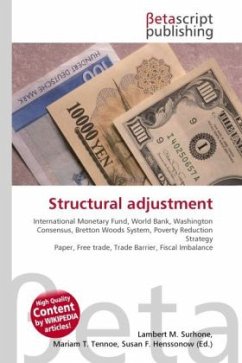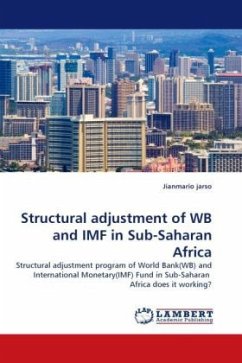High Quality Content by WIKIPEDIA articles! Structural adjustment is a term used to describe the policy changes implemented by the International Monetary Fund (IMF) and the World Bank (the Bretton Woods Institutions) in developing countries. These policy changes are conditions (Conditionalities) for getting new loans from the IMF or World Bank, or for obtaining lower interest rates on existing loans. Conditionalities are implemented to ensure that the money lent will be spent in accordance with the overall goals of the loan. The Structural Adjustment Programs (SAPs) are created with the goal of reducing the borrowing country's fiscal imbalances. The bank from which a borrowing country receives its loan depends upon the type of necessity. The SAP's are supposed to allow the economies of the developing countries to become more market oriented. This then forces them to concentrate more on trade and production so it can boost their economy.
Bitte wählen Sie Ihr Anliegen aus.
Rechnungen
Retourenschein anfordern
Bestellstatus
Storno








